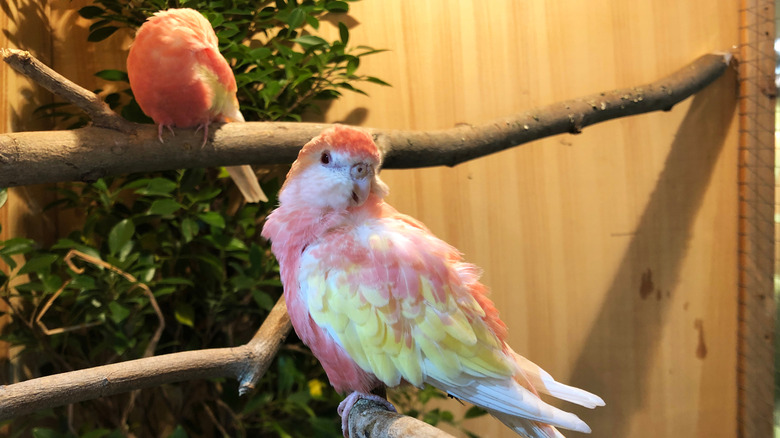Differences Between Male & Female Rosy Bourke's Parakeets
Rosy Bourke's parakeets, also known as Bourke's parrots, are native to Australia. According to Animal Diversity Web, they typically reside in the wild in shrubby plains or grasslands and can live up to 12 or 13 years in captivity. The sex of the rosy shade of the Bourke's breed can be difficult to differentiate, though behavioral clues, especially during mating season, can provide insight.
External Physical Differences
According to Animal Diversity Web, male and female rosy Bourke's parakeets are similar in size, weighing in, at maturity, at approximately 42 to 49 grams, with the females slightly smaller in stature than the males. While both male and female birds have a blue frontal band across their ceres, in adult males, this feature is prominent, and in females, is more reserved or even nonexistent.
Feather Coloration
Both male and female of the species share similar coloration with dark blue primary wing feathers, pale blue feathers under the wings and a soft pink coloration at the central breast. The male of the species also has a distinguishing salmon pink throat and foreneck. The center of the breast and abdomen on both sexes is a rosy-pink. The tail on both the male and female rosy Bourke is white in the center, fading to whitish blue and darker blue at the outer feather tips. Secondary wings, crown and neck are brownish pink to dark brown in color. The flanks and tail underside are blue in both sexes, though the female may be slightly darker.
Mating And Breeding
Rosy Bourke's parrots are monogamous, according to Animal Diversity Web, with males pursuing a mate, generally from August through October. The male often will use elaborate displays, showing off his colorful wings and strutting in front of the female, drawn up to his full height. Once mated, the male, rather than the female, defends territory during nesting and will deliver food to the female while she sits on eggs and cares for hatchlings.
Differences In Hatchlings
According to BirdChannel.com, rosy Bourke's parakeets reach full breeding maturity at about a year of age. Females in captivity will use a breeding box to lay eggs. It can be difficult to tell the sex of hatchlings until they undergo their first molt and get their adult plumage, though DNA testing can provide sex information for young parrots.
